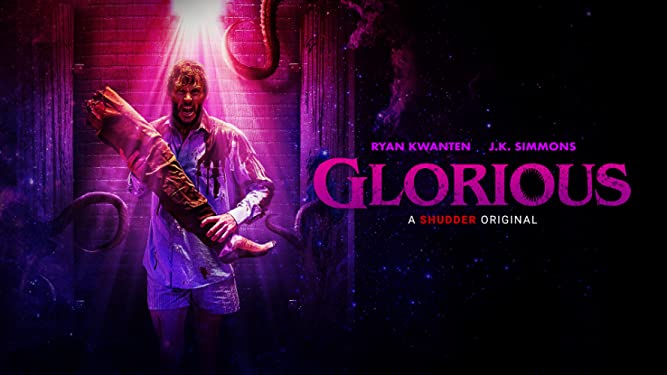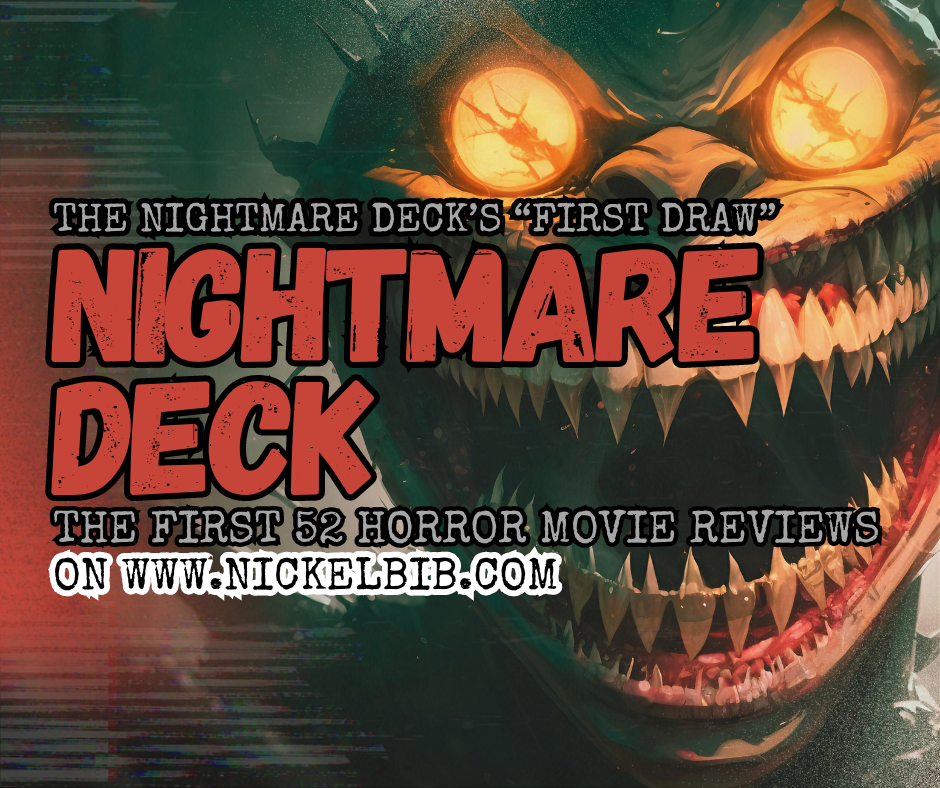Recently added to the Shudder streaming service, Edge of the Knife is a film I went into without knowing anything about it. Directed by Gwaai Edenshaw and Helen Haig-Brown, both in their feature debuts, Edge of the Knife is a Canadian drama film or Haida film (as billed on Shudder – an archipelago off the Northern Pacific coast of Canada). Set in 19th century Haida Gwaii, the film is the first feature film spoken only in the Haida language, and, true to form, is a telling of a classic Haida story about a man’s journey into becoming Gaagiixiid, “the Wildman”. Reportedly, one of the main inspirations for Edge of the Knife’s production came from a University of British Columbia professor named Leonie Sandercock and Haida Gwaii community organizers who wanted to encourage learning Haida, an endangered language with fewer than twenty actual speakers at the time of the film’s production.
Although that info dump summarization and backstory might make it feel otherwise, Edge of the Knife is a very approachable, palatable film for even a casual horror enthusiast. The ‘classic Haida story’ feels, in fact, classic in the general sense, reminiscent of a lot of different stories told across a lot of different cultures.
Basically, there is a man named Adiitsʹii, his bestfriend Kwa, and Kwa’s son. Adiits’ii is a charming, likable man, but he can be immature and reckless at his worst. Adiits’ii is close to Kwa’s son, who looks up to him and bonds with him in a cool brotherly way. Everything goes off the rails, however, when Adiits’ii wrongfully brings Kwa’s son out on the waters, in spite Kwa’s repeated warnings, and an accident occurs, leading to the child’s death. As you might imagine, Adiits’ii is ashamed and terrified, and exiles himself from the tribe, venturing out into the wilderness, becoming rabid and feral – a Gaagiixiid. As the tribe realizes Adiits’ii is alive, Kwa must deal with his own desires for revenge.
I would imagine merely by that paragraph alone, you’re both drawing a bunch of vague comparisons to other stories you’re familiar with, and, also, likely able to predict the rest of the film and be more-or-less entirely accurate about it. Like I said, this is a story you’ve heard, in some way, already before. And while Edge of the Knife is not an innovative film, per se, in terms of narrative, I feel it does succeed in other ways that I believe help keep it from feeling like a retread or, perhaps, like it is coasting off the novelty of its own existence.
The film is well shot. Very well shot, in fact. There’re more than a handful of beautiful visuals where you’ll slap your knee and think, “That could be a wallpaper on a computer somewhere!” Or, maybe not. But there is a lot of gorgeous scenery, a real feast for the eyes, and it is all benefited by slick, crystal clear production value and a steady hand behind the camera. This is a film that feels very modern in the way it is shot and how the story is brought together – which may make it more appealing than how it may appear from your initial impression. Likewise, the clothing design and general commitment to authenticity help create an immersive environment.
The acting can best be described as interesting, I think, and there is a good reason for that. As I was watching, I couldn’t help but notice a certain subdued, slowness to their dialogue, which I didn’t a whole lot, but I knew something was ‘off’ about it. Then, I realized, of the twenty actual speakers of the Haida language, most of them aren’t actors nor are they in this film. Reportedly, none of the starring actors of them could hold a conversation in Haida prior to the film’s production, requiring them to take a two week crash course to learn the lines and pronunciation of the words. Which isn’t exactly a lot of time to become accustom in a new language. Thus, I think that general ‘offness’ I felt throughout the film is explainable by the cast being tasked with speaking a language they’re not largely comfortable with. I didn’t find this as too detrimental, and, honestly, I found that it helped create a certain mesmeric, poetic quality about the film, focusing primarily on emotional and physical storytelling, and serving soft, thoughtful dialogue from their cultural perspective.
The performances are all mostly capable, although it is certainly the actor who portrays Adiits’ii (Tyler York) that is most challenged and vulnerable – having to portray “The Wildman” in a way that feels authentic. His portrayal is impressive, given his inexperience as an actor, and, once more, finds its strength through physical and emotional performance more than spoken dialogue. It isn’t a groundbreaking characterization, in fact, I feel like they could’ve went into more depth on the character’s descension into madness, his feelings of emotional turmoil and how they motivated him to run out into the wilderness, as the transition in its current form felt very abrupt and immediate in spite it being that he spent a year in the wilderness by himself. However, with the sum of its parts, it does add up to a solid presentation overall.
By the end, Edge of the Knife doesn’t reinvent the wheel, but amounts to a commendable, genuinely enjoyable rendition of a classic storyline. The film is bolstered by worthwhile performances and a unique cultural perspective we hadn’t yet seen portrayed in a film. The production value and technical prowess, coupled in with the unique setting, also elevate it and make it a film worthy of checking out beyond the mere nobility of its behind-the-scene intent. It’s a neat, little film, and I would recommend it.
Rating: – 3.0 out of 5.0






GIPHY App Key not set. Please check settings